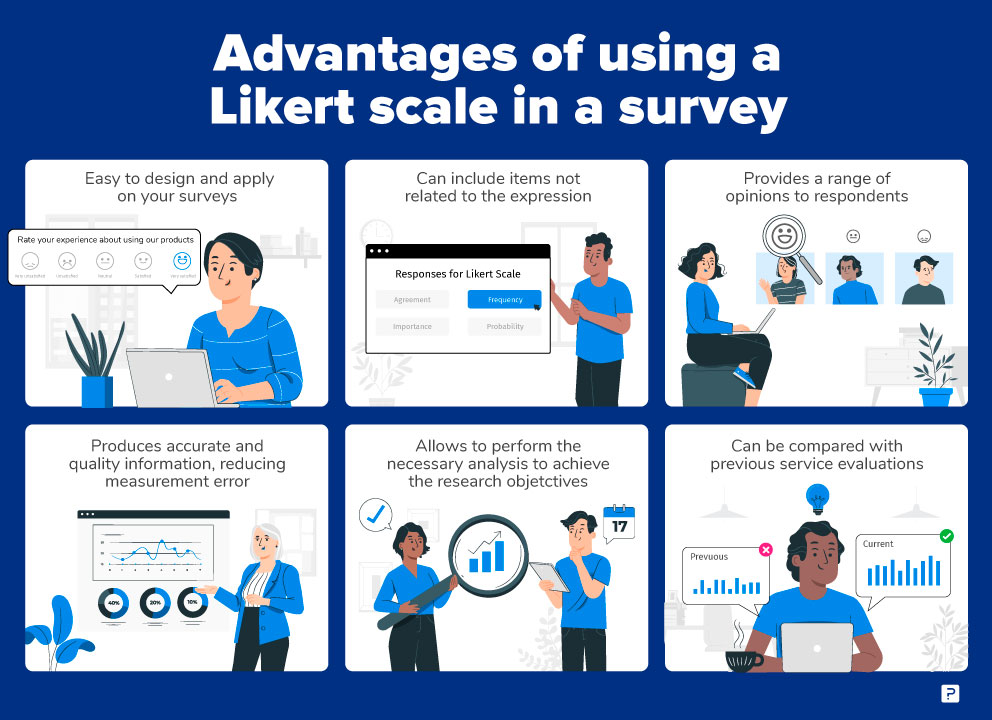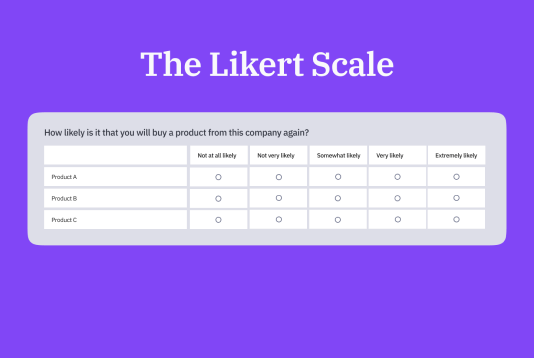Unlocking Insights: A Comprehensive Guide To Using Likert Scales In Questionnaires For Data Collection
Unlocking Insights: A Comprehensive Guide to Using Likert Scales in Questionnaires for Data Collection
Related Articles: Unlocking Insights: A Comprehensive Guide to Using Likert Scales in Questionnaires for Data Collection
Introduction
In this auspicious occasion, we are delighted to delve into the intriguing topic related to Unlocking Insights: A Comprehensive Guide to Using Likert Scales in Questionnaires for Data Collection. Let’s weave interesting information and offer fresh perspectives to the readers.
Table of Content
Unlocking Insights: A Comprehensive Guide to Using Likert Scales in Questionnaires for Data Collection

The Likert scale, a widely used psychometric tool, provides a structured framework for quantifying opinions, attitudes, and beliefs. It empowers researchers to gather valuable data, enabling a deeper understanding of complex human experiences. This guide delves into the intricacies of crafting effective questionnaires using Likert scales, highlighting its significance and offering practical tips for maximizing its utility.
Understanding the Likert Scale: A Foundation for Measurement
The Likert scale, named after its creator, Rensis Likert, presents respondents with a series of statements or questions, each accompanied by a range of response options. These options typically represent a continuum of agreement or disagreement, often ranging from "Strongly Disagree" to "Strongly Agree." Each response option is assigned a numerical value, allowing for the aggregation and analysis of data.
Types of Likert Scales: Adapting to Diverse Research Needs
The standard Likert scale, featuring five response options, is the most common format. However, variations exist to suit different research contexts:
- Odd-numbered scales: Offer a neutral midpoint, providing respondents with the option to express neither agreement nor disagreement.
- Even-numbered scales: Force respondents to lean towards either agreement or disagreement, eliminating the neutral option.
- Forced-choice scales: Present pairs of opposing statements, requiring respondents to choose one, eliminating the possibility of neutrality.
- Semantic differential scales: Employ bipolar adjectives (e.g., "Good" vs. "Bad") to capture nuanced perceptions.
Constructing Effective Likert Scale Questionnaires: A Step-by-Step Guide
Developing a robust Likert scale questionnaire demands careful consideration and adherence to best practices:
- Define Research Objectives: Clearly articulate the research question and the specific constructs you aim to measure. This ensures that the questions align with the research goals.
- Develop Clear and Concise Statements: Phrase statements in a way that is easily understood by the target audience. Avoid jargon, ambiguity, and double-barreled questions.
- Ensure Relevance and Specificity: Each statement should directly relate to the construct being measured. Avoid general or vague statements that lack specificity.
- Maintain Neutrality: Frame statements in an objective manner, avoiding leading or biased language that could influence responses.
- Establish a Suitable Response Scale: Choose the appropriate number of response options based on the complexity of the construct and the desired level of detail.
- Pilot Test and Refine: Conduct a pilot study with a small sample group to evaluate the clarity, comprehensiveness, and effectiveness of the questionnaire.
Benefits of Using Likert Scales: Unveiling the Value Proposition
The popularity of Likert scales stems from their numerous advantages:
- Ease of Use: Respondents find it straightforward to understand and complete Likert scale questionnaires.
- Versatility: Likert scales are adaptable to a wide range of research topics, from customer satisfaction to employee morale.
- Quantitative Data Collection: Likert scales provide quantifiable data, enabling statistical analysis and drawing meaningful conclusions.
- Cost-Effective: Compared to other data collection methods, Likert scales are relatively inexpensive to implement.
- Scalability: Likert scales can be used with large sample sizes, facilitating broad-scale research.
FAQs: Addressing Common Concerns
Q: What is the ideal number of response options for a Likert scale?
A: The optimal number of response options depends on the specific research question and the complexity of the construct being measured. Five-point scales are commonly used, but four or seven-point scales can also be effective.
Q: How can I ensure the reliability and validity of my Likert scale questionnaire?
A: Employ established psychometric techniques, such as Cronbach’s alpha, to assess the reliability of the scale. Conduct validation studies to ensure that the scale measures the intended construct accurately.
Q: What are some common pitfalls to avoid when using Likert scales?
A: Be mindful of leading questions, ambiguous wording, and response biases that can compromise the validity of the data.
Tips for Maximizing the Effectiveness of Likert Scale Questionnaires
- Provide clear instructions: Ensure respondents understand how to complete the questionnaire.
- Offer anonymity: Guarantee confidentiality to encourage honest responses.
- Use appropriate language: Tailor the language to the target audience.
- Maintain a logical flow: Arrange questions in a coherent and logical order.
- Include demographic information: Gather relevant demographic data for analysis.
Conclusion: Unlocking Insights through Structured Measurement
Likert scales provide a powerful tool for researchers seeking to understand and quantify human perceptions, attitudes, and beliefs. By adhering to best practices and employing appropriate techniques, researchers can leverage the versatility and reliability of Likert scales to gather valuable data and extract meaningful insights. This, in turn, enables informed decision-making, driving positive change across various disciplines.








Closure
Thus, we hope this article has provided valuable insights into Unlocking Insights: A Comprehensive Guide to Using Likert Scales in Questionnaires for Data Collection. We thank you for taking the time to read this article. See you in our next article!
You may also like
Recent Posts
- The Evolving Landscape Of Online Gaming In 2025: A Look At Emerging Trends And Innovations
- The Evolving Landscape Of Online Gaming On PS4 In 2025: A Glimpse Into The Future
- The Evolving Landscape Of Free Online Gaming: A Look Into Microsoft’s Vision For 2025
- The Evolution Of Online Slots: Exploring The Landscape Of Free Play In 2025
- The Enduring Charm Of 8-Bit: Exploring Online Retro Gaming In 2025
- The Evolving Landscape Of Free Virtual Games: A Glimpse Into 2025
- The Evolving Landscape Of Online Two-Player Games For Kids: A Look At 2025
- Wordplay In The Digital Age: Exploring The Evolution Of Online Word Games In 2025
Leave a Reply